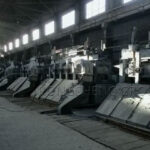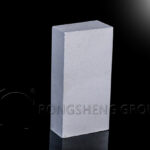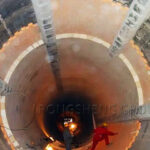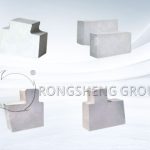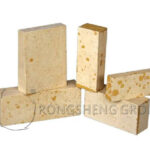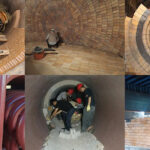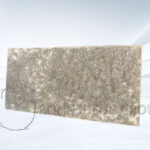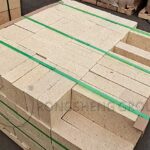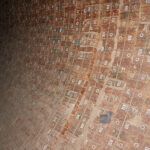Aluminum electrolysis cells are usually rectangular steel shells lined with grey bricks. The main reasons for the damage to the side wall lining of the aluminum electrolytic cell include the oxidation of the material caused by the intake of air between the steel shell and the brick lining. Erosion of cryolite, NaF, and molten aluminum at high temperature. Erosion due to melt flow. Temperature fluctuations and thermal expansion cause thermal stress. Amorphous carbon blocks, graphite carbon blocks, etc. have been used in the side walls of aluminum electrolytic cells in the past. The most fatal disadvantage of such materials is poor oxidation resistance and low strength. In order to prevent the sidewall from being oxidized and having greater resistance, the sidewall is developing in the direction of partially or fully using SIC materials. Silicon carbide bricks for aluminum electrolyzer cell for sale in Pakistan. Contact Rongsheng refractory brick manufacturers to get free price information.
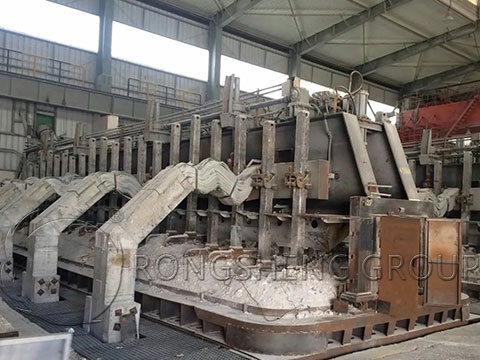
Requirements for Refractory Materials for Cathodes of Aluminum Electrolytic Cells
The main requirement of the cathode refractory material of the aluminum electrolytic cells is to have good electrical conductivity and resist the corrosion of cryolite, NaF, and molten aluminum at high temperatures. The working layer at the bottom of the electrolytic cell was generally built with carbon blocks in the past. However, due to the reaction of carbon and sodium to form new compounds, the structure of the brick lining is relaxed, the strength is reduced, and cracks appear in the carbon block. Then electrolyte and aluminum liquid infiltrate along the crack, and aluminum reacts with carbon to form Al4C3 at high temperature. Al4C3 is loosely combined with carbon, so that the cracks expand, which eventually leads to the deformation of the electrolytic cell shell and the severe corrosion of the lining, which shortens the service life. Therefore, the cathode material at the bottom of the electrolytic cell is being changed from the original amorphous carbon bricks to semi-graphitized carbon bricks or graphitized carbon bricks.
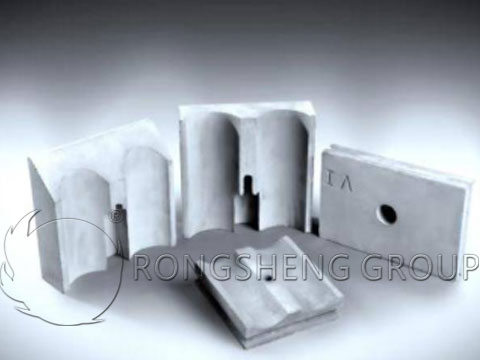
Application of Silicon Carbide Bricks on Side Wall of Aluminum Electrolytic Cell
In order to prevent the sidewall from being oxidized and having greater resistance, the sidewall is developing in the direction of partially or fully using SIC materials. Silicon nitride bonded silicon carbide bricks are the best. Silicon nitride bonded silicon carbide bricks have excellent high-temperature mechanical properties and good thermal conductivity. It is easy to form condensed slag on the inner side, and the resistivity is large, which reduces the current loss of the side wall. The material is not easily oxidized. Does not react with molten aluminum, cryolite, and other melts. High mechanical strength, can also greatly reduce the thickness of the lining brick, increase the volume of the electrolytic cell, and stabilize the operation. For example, the thickness of the side walls was about 200-400 mm when the carbon bricks were originally used. After using silicon nitride bonded silicon carbide bricks, the thickness of the side wall is only 75 mm.
Properties of Silicon Nitride Combined with Silicon Carbide Bricks for Aluminum Electrolytic Cells
- 1) Silicon nitride combined with silicon carbide bricks is hard, with a Mohs hardness of about 9. It is a high-hardness material among non-metallic materials, and its hardness is second only to diamond.
- 2) The normal temperature strength of silicon nitride combined with silicon carbide bricks is high. At a high temperature of 1200 to 1400 ° C, it maintains almost the same strength and hardness as normal temperature. With the use of different atmospheres, the maximum safe use temperature can reach 1650 ~ 1750 ℃.
- 3) The thermal expansion coefficient is small, and the thermal conductivity is higher than that of the normal silicon carbide bricks. It is not easy to generate thermal stress, has good thermal shock stability, and has a long service life. High temperature creeps resistance, corrosion resistance, rapid cooling and heating resistance, oxidation resistance, easy to be made into bricks with high dimensional accuracy and requirements.
How Much are the Silicon Carbide Refractory Bricks per Ton for Aluminum Electrolytic Cells?
How much is a ton of electrolytic aluminum bad silicon carbide refractory bricks? This needs to consider the shape of the brick, standard, special-shaped, special-shaped, etc., as well as the content of materials and various indicators, etc. In addition, if it is customized, you need to re-customize the mold, which also requires additional charges. To buy high-quality silicon carbide bricks for aluminum electrolytic cells in Pakistan, please contact the silicon carbide refractory brick manufacturers. Rongsheng refractory brick manufacturer, after communicating with you, understands your furnace condition information and production needs. We will recommend to you the most suitable refractory brick products for your production needs, and provide you with free price information. As a refractory factory that already has customers in more than 70 countries, the cheap fire refractory bricks of Rongsheng Refractory Factory will never let you down.

